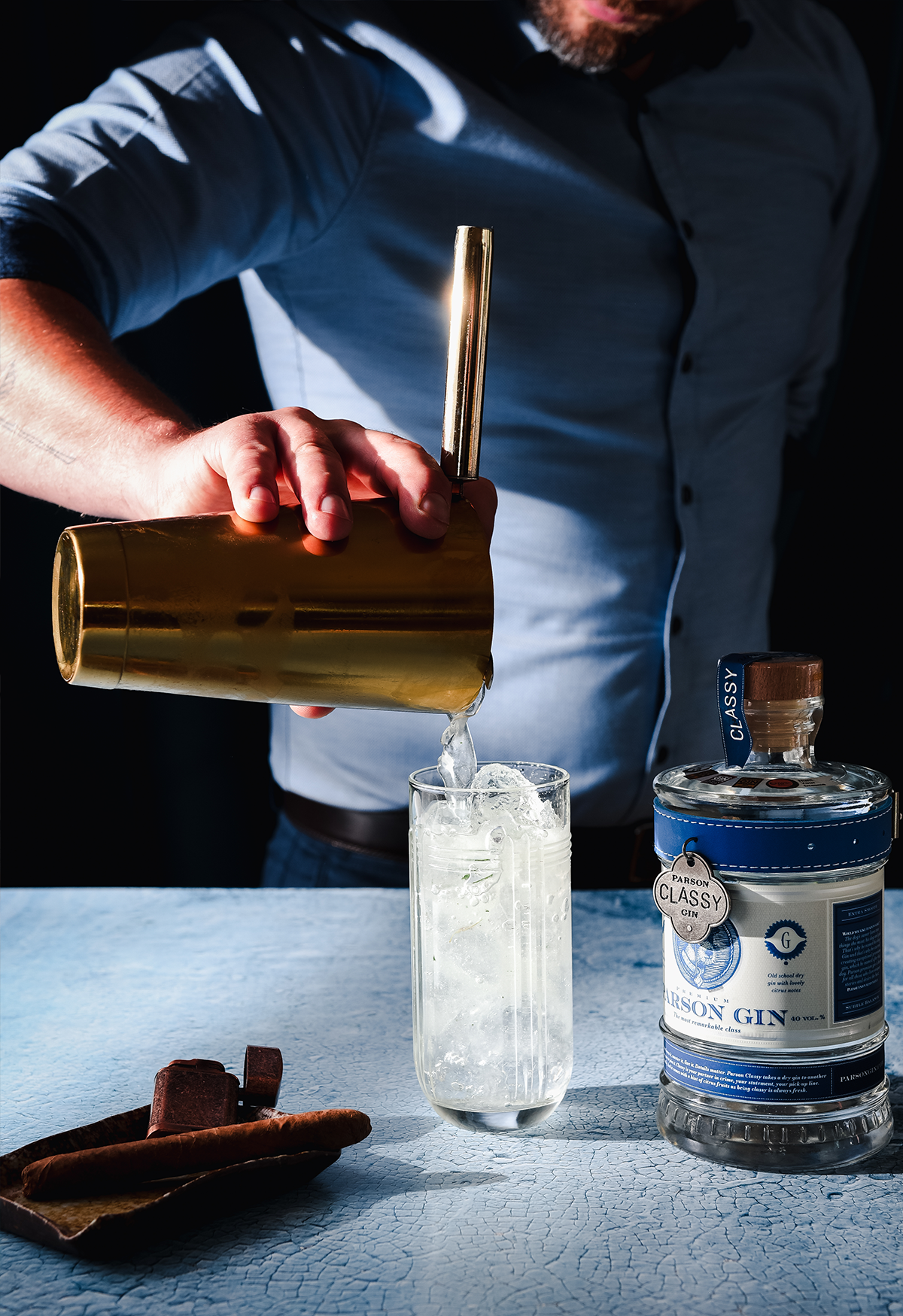How to make a perfect Gin and Tonic
Level of difficulty to pour a gin and tonic? Easy.
Level of difficulty to pour a perfect gin and tonic? Still easy. As long as you know how to do it properly.
Let us share with you a few tips and tricks to make this popular, bubbly drink with confidence! After following our 6 simple steps, you’ll be able to put the title ‘Master of G&T’ on your resume. :)
1. Choosing the right glass
With the increased popularity of gin (and tonic) came the urge to present the drink as creatively as possible. You might have seen gin and tonics served in glasses of different shapes and sizes. But when it comes to glassware, rules are often set for a reason: the glass needs to serve the drink rather than purely looking nice.
The ideal shape that helps maintain the drink's balance of flavours, presentation, and temperature is the highball glass. This tall and slim glass holds a standard serving size of the drink while leaving room for garnishes and a good amount of ice. It is also designed to preserve the carbonation of the tonic water, since the narrow opening helps retain the fizziness of the tonic for longer.
2. Size matters
We’re talking about ice cubes, of course.
Although many people are bothered by a larger amount of ice in a drink and we still often encounter the mistaken belief that more ice means less beverage, it is necessary to recognize that ice serves a purpose. Maintaining the right temperature when serving cocktails is essential. Ice plays a vital role in achieving the desired texture of a drink, and a properly chilled beverage contributes significantly to the balance of flavours.
In the case of a gin and tonic, the use of XXL ice cubes is highly popular. These larger ice cubes melt more slowly, effectively chilling the drink without excessively diluting it, thus preserving the balance of flavours without rendering the drink too watery. Additionally, large ice cubes enhance the drink's visual appeal, creating an eye-catching presentation in the glass that is aesthetically pleasing.
3. Tonic selection
By choosing Parson gins, you’ve already done the first part of the job right, obviously. But picking the right tonic as your mixer is equally important as well. In the flood of products on the market, including tonics, we find countless variations that differ in their ingredients, sweetness, quinine content, level of carbonation, dominant flavours, etc. There are tonics from various producers, which, besides classic tonics dominated by the typical aroma of quinine, also offer numerous tonics with flavours – from fruity, floral, to herbal, spicy, Mediterranean.. you name it!
At Parson gin, we believe that flavoured gins should be paired with classic tonic water, as this brings out the basic aroma of the gin, which could be overshadowed by the specific flavour of a flavoured tonic. All our flavoured gins – Grapy, Sunny, and Cosy, are therefore preferred in combination with a tonic of classic taste. After numerous tests, our favourite remains Goldberg tonic, a high-quality tonic water that is enhanced by an ultra-high proportion of carbon dioxide.
For dry gins, which are somewhat more 'clean' or neutral in flavour on their own, we can also experiment with tonics of more pronounced flavour. Even in the case of Parson Classy dry gin, you won't go wrong with a classic tonic, but for a bolder combination, try Goldberg Yuzu tonic, as the aroma of this Japanese fruit complements the citrus notes of the gin excellently.
4. Perfect ratio
Forget about the golden ratio! When it comes to perfection in our liquid world, a masterpiece is shaped around the numbers 1:2. Meaning – for one part gin, add two parts of tonic water. Usually, we’re serving 50 ml of gin with 100 ml of tonic. Repeatedly.
5. Pouring technique
To enjoy the proper gin & tonic experience in your mouth, you need to feel the bubbles!
We don’t want to ‘break them’ or let them escape the drink, which is why the pouring technique is so important. You need to slowly pour the tonic water into the glass over the gin and ice. Pouring it slowly helps preserve the carbonation and prevents excessive fizzing. Aim to pour it gently down the side of the glass to minimize agitation and maintain the drink's effervescence.
6. Cherry on top: Garnish and spices
If you think this final step will only have a visual effect on your drink, think again.
To randomly choose a spice or botanical solely because it looks good on top of your drink is probably the biggest mistake you can make. In this case, ‘less is more’ is your guideline. Strong spices or wrongly selected botanicals can easily change or even destroy the original flavour profile of gin and tonic if they are not compatible.
A life hack to never do it wrong again is to use ingredients – botanicals, herbs, spices – that are already contained in the gin you’re serving. So, read the label and impress! If still in doubt, you can always use juniper berries, since juniper is indeed the only botanical that is definitely contained in every gin ever produced.
Now that you’re all set, don’t forget one more thing: gin and tonics are best enjoyed fresh, so serve the drink promptly after preparing it to ensure optimal flavour and effervescence.

